Yotaphone 2
Yotaphone 2 Review:
Introduction
It may look like the YotaPhone 2 has lost the element of surprise but the sequel is actually trying to please the users the original wowed - and get a bigger crowd interested. The first generation was unexpected and fascinating but high price and low awareness didn't help it get its message across.
Number 2 isn't going to be a bestseller either, not in its wildest dreams, but it does well to fix a lot of things that didn't quite work the first time around. Yota Devices announced the YotaPhone 2 almost a full year ago for it to only recently become available. And, of course, we couldn't miss the opportunity to review one of the most intriguing gadgets in the market.
On a first glance, the YotaPhone 2 looks just like a regular Android flagship - even a bit old-fashioned, as in curvy and not too slim. The specs mean business though: a gorgeous FullHD AMOLED display, 32GB of storage, LTE, a solidly-built body and buttery-smooth experience courtesy of a Snapdragon 800 chip.
However, your perception of it will change completely once you turn it around. The unique feature is the always-on e-Ink display mounted on the back, safe under a layer of curved Gorilla Glass 3.
Think of all the possibilities that the battery-efficient screen opens - a power-frugal, pocket-sized e-reader for those sunny days on the beach or those long commutes; instant access to your smartphone's most important features - notifications, the time, calls, messages and email, the web and your favorite contacts, and even games. An ever changing battery cover style for your phone too, if you will.
There is a lot to discover about the new YotaPhone 2 but before we proceed to the key features, we must say we really like the YotaPhone 2 concept. It managed to get us excited as few devices have - let's hope it's not just in it for the points for trying.
Key features
- 5.0" 16M-color 1080p AMOLED touchscreen, 441ppi
- Always-on 4.7" 16-level grayscale e-Ink display (540 x 960 px, 234ppi)
- Corning Gorilla Glass 3 on both screens
- Android OS v4.4.3 KitKat with Yota Apps
- Quad-core Krait 400 CPU at 2.3GHz, 2GB of RAM, Adreno 330 GPU; Snapdragon 801 chipset
- 8MP autofocus camera, LED flash; HDR, panorama; 1080p@30fps video capturing
- 32GB of built-in storage (25GB user-accessible)
- Cat. 4 LTE (150/50Mbps); Wi-Fi a/b/g/n/ac; Bluetooth 4.0; NFC; GPS/GLONASS/BeiDou; FM radio; microUSB (SlimPort)
- 2,500mAh battery
- Active noise cancellation with a dedicated mic
Main disadvantages
- No high-end video recording (either 4K @ 30fps or FullHD @ 60fps)
- No microSD card slot or higher storage capacity option available
- Always resting on a screen regardless how you put it down and double the chance of breaking a screen if you drop it
The YotaPhone 2 wasn't meant to compete with the current crop of flagships in terms of productivity and value-added features. On a second thought though, the extra screen has more added value than most.
Anyway, it was obviously built with smooth performance in mind. The lack of 4K video recording or a microSD card slot are not that much of a problem and surely won't be tough to swallow having in mind the YotaPhone 2's unique skill and character.
Without further ado we proceed with our traditional hardware checkup. The premium retail box gets opened right after the jump.
Retail package
YotaPhone 2 is packed within a premium paper box, which unfolds rather oddly, spreading the entire retail package contents before you.
All components, even the SIM ejection pen, are packed with great attention to detail, just like we'd expect from a premium product.
The micro USB cable and the single-piece headset use tangle-free wires, which is still rare to see with the competition. There are also lots of complimentary earbuds - Yota made sure there is a pair to suite everyone's ears and then some.
YotaPhone 2 360-degree view
Some might say the YotaPhone 2 looks a lot like the Nexus 5 as it uses similar material and has a similar understated looks.
The YotaPhone 2 spreads at 145 x 69.4 x 9mm, which is 6mm taller than the unbelievably compact Nexus 5, but the width and thickness of the two are identical. The YotaPhone 2 weighs 145g, which is 15g heavier than LG-made Nexus 5.
Design and build quality
YotaPhone 2 isn't the traditional smartphone we are used to seeing. Sure, it looks like a generic phone at the front, but the back is an entirely different story.
The YotaPhone 2 is built around a matte plastic frame, looking just like the Nexus 5's, while the two displays are protected by respective layers of Gorilla Glass 3.
The rear Gorilla Glass 3 shield is curved at the corners. It isn't as transparent as the front glass and has a smoked look to it. It's also matte and even slightly rough to the touch as opposed to the smooth glass surface of the front. In other words, it doesn't feel as glass to the touch. The smoked-like surface may sacrifice some of the screen's contrast, but it looks great and fits the design quite well.
The good news is there isn't a single glossy element on the YotaPhone 2 and the gadget isn't prone to fingerprints and smudges at all. It's a sleek and elegant phone, and its matte back boosts both the aesthetics and the overall grip.
Handling the YotaPhone 2 is a real pleasure, courtesy of the mostly matte material used on both the frame and over the rear display. We find the minor toll taken on the e-paper display's contrast rather acceptable, because otherwise we'd probably have gotten an all glossy and slippery phone - an awful combination.
Controls
The front of the YotaPhone 2 is mostly occupied by the beautiful 5" AMOLED screen. The earpiece is centered on top of the screen, flanked by a coupled of sensors and the front 2.1MP snapper.
There aren't any controls below the screen, Android OS provides virtual ones instead.
The left side of the YotaPhone 2 is completely bare, while the right one houses the volume rocker and the power/lock key. You may notice the small hole on the volume control - the entire thing is ejectable, as it doubles as a nano-SIM bed.
The lonely 3.5mm audio jack is at the top of the YotaPhone 2, while the bottom has the microUSB port flanked by two identical grilles - one for the loudspeaker and one for the microphone.
Finally, the electronic paper display is the highlight feature at the back of the YotaPhone 2. Above we find the 8MP camera lens and the single-LED flash.
You can choose from dozens of widgets for the rear display, you can also set it to show a picture or pictures from your gallery. The display is always on and for the naked eye it looks like a factory print on a rear panel. If you turn off the phone (or your battery dies), the YotaPhone 2 name will continue to be displayed at the rear display, as once the image has been set, the e-Ink screen requires virtually no power to sustain it.
Amazingly good 8MP camera
The YotaPhone 2 comes with a surprisingly good 8MP auto-focus camera. It takes images in a maximum resolution of 3264x2448 pixels. It has a built-in HDR mode, which can even be set to activate automatically in certain shooting conditions.
The camera UI is intuitive and requires practically no time to get used to. The image capture button is on the right side. Timer, flash settings, grid view, and the ability to switch to the front-facing camera are available via a menu in the top right corner.
The shooting options are located on the left side. They include regular shots, Panorama, Lens Blur, Photo Sphere, and Video.
HDR+ requires manual activation. We wish that there was an auto option available, though its lack is hardly a deal breaker.
The camera locks up focus rapidly. You can change the focus point via a tap on the screen.
Users can opt to set their image exposure manually via a toggle in the settings menu. Resolution of the photos, as well as the quality of the panoramas can also be tweaked.
YotaPhone 2 snaps amazingly good 8MP shots - if our test charts and posters are to be believed, it's even better than the 8MP camera on iPhone 6. The shots have plenty of resolved detail, impressively contained noise without any obvious noise reduction smears, and no oversharpening. Best of all, the processing itself is so mature that when pixel-peeping, it's hard to tell the photos come from a cameraphone and not a dedicated digicam.
Turning on HDR does a good job of extending the dynamic range. It resolves more detail in the shadows, but it leads to somewhat unnatural looking highlights.
YotaPhone 2 supports shooting 180-degree panoramic pictures. You can choose between three settings for the output resolution - low (high-speed), medium (normal speed), and high (slow). The high resolution option shoots at about 15000 x 2800 px. The resolved detail and contrast in those pano images is quite poor and the focus seems inaccurate on all shots we've taken.
You can use the rear camera for a selfies by switching the live camera feed to the rear display with the Yota Mirror. This way you will have the viewfinder facing you.
Photo quality comparison
The YotaPhone 2 enters our Photo quality comparison tool to face off against other 8MP shooters and you can see it even outdoes the iPhone 6 in all three test charts.
1080p video recording at 30 fps
The camcorder UI shares the same viewfinder with the still camera. The YotaPhone 2 records 1080p videos at 30fps. The bitrate averages about 20Mbps, which explains the good amount of resolved detail. Audio is recorded at 96 Kbps in stereo mode with a sampling rate of 48 kHz.
Videos by the YotaPhone 2 are not on the level of the still images. Indeed, there is is enough detail, the colors are good, and the framerate is smooth. However there is a certain softness to them and they are nowhere as good as the ones shot by the iPhone 6.

we reached the end of this review, we were ready to rethink. It's an odd-ball of a device by all means, but its second screen opens the door to a whole new world of possibilities.
The YotaPhone 2 is closer to the current crop of flagships than to the midrange market segment. The overall performance is Nexus 5/Galaxy S5 grade or similar - fast, fluid and capable of handling pretty much everything.
The 5" AMOLED is another great asset, with excellent pixel density, great contrast, solid color reproduction and good sunlight legibility. The 8MP rear cam turned out really nice, while the vanilla Android KitKat runs smooth as silk. YotaPhone 2 is supposed to get Lollipop sooner rather than later. We are certainly starting to like how Yota goes about its business.

The rear e-Ink display turned out not as sharp as other conventional e-reader screens. But it does offer the hassle-free and eye-soothing reading experience right out of your pocket. Plus, it indeed makes the YotaPhone 2 look fresh and new every day, with those awesome wallpapers that look like printed on the curved Gorilla Glass 3 over at the back.
And there is more. The rear widgets and apps let you access the phone's basic features: calls, messages, and email with the main screen off, which means lower battery consumption. There are games and apps that look darn good on the e-paper screen. And you can even run the Android homescreen on it, if you want.
Honestly, there isn't a single YotaPhone 2 feature that didn't strike our fancy. The lack of a 4K video recording or microSD slot is certainly not something to fuss over.
YotaPhone 2 key test findings:
- Build quality is great, dual Gorilla Glass 3, curved back
- The quality of the AMOLED display and its sunlight legibility is excellent
- The e-Ink display is great for reading e-books, RSS and setting up custom wallpapers and info screens, though its contrast isn't on par with the conventional e-book readers
- The battery life is average, but its 3G call endurance is great
- We rated the speaker loudness as Average
- Vanilla Android KitKat OS is very light and smooth, Lollipop update is on the way
- Many Yota Apps and Covers for the e-paper screen, custom Energy Saver option
- The benchmark performance is very good for the market segment, but worse than the Snapdragon 801 competition
- The audio quality is good
- Camera takes amazing photos (imho, better than an iPhone 6) but video recording can only be rated as "good"
- Video player supports every popular video codec but MOV, it also lacks AC3 audio decoding; subtitles are not supported.
There is no other device to compete directly with the YotaPhone 2 besides the original YotaPhone, of course.
In case the e-paper screen is all you need and you don't care about how powerful your hardware is, or which Android version you get - you can always opt for the original. It has a front 4.3" IPS HD screen and a 4.3" e-paper rear screen. The Snapdragon S4 Pro chipset is dated, as is the Android Jelly Bean OS but that nearly halves the price. At €430, it's still rather expensive for what it offers under the hood.
And the sequel is really pushing it - at €700 it will surely be a tough sell. For this sort of cash you can get the latest Kindle Voyage with a bigger, 300ppi backlit e-Ink screen and Wi-Fi and free 3G data. This would leave you with enough cash to get a mighty fine smartphone with even better specs than the YotaPhone 2.
If you're lucky, you may as well squeeze a flagship in that budget. The water-proof Samsung Galaxy S5 with a 5.1" Super AMOLED screen, the LG-made Nexus 5 32GB or the newly released 5.2" AMOLED Moto X 2nd Gen 32GB are among the prime options in the 5-inch segment.
No doubt though, the YotaPhone 2 isn't your average Android flagship and certainly not a smartphone for everybody. To be honest, a specific target group is quite hard to define. Avid e-book readers will certainly appreciate the pocketable form factor and not being forced to stare at a backlit LCD screen. It's a screen too that we discovered has many other uses beyond this one.
In the end though, the novelty factor will be much stronger in attracting customers who are usually willing to spend big on new technology. The YotaPhone 2 is as unique as they get and the novelty isn't likely to wear off soon - for the right users, this may as well justify the price. Although to be fair, speaking about price here is like talking about which side your toast will land. If it's buttered on both sides you just don't let it slip.
Subscribe to:
Post Comments
(
Atom
)











































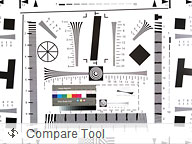
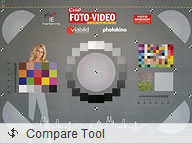



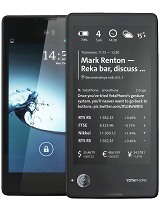
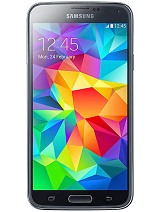
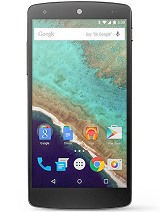
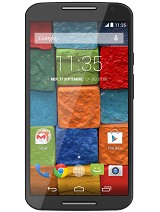




No comments :
Post a Comment